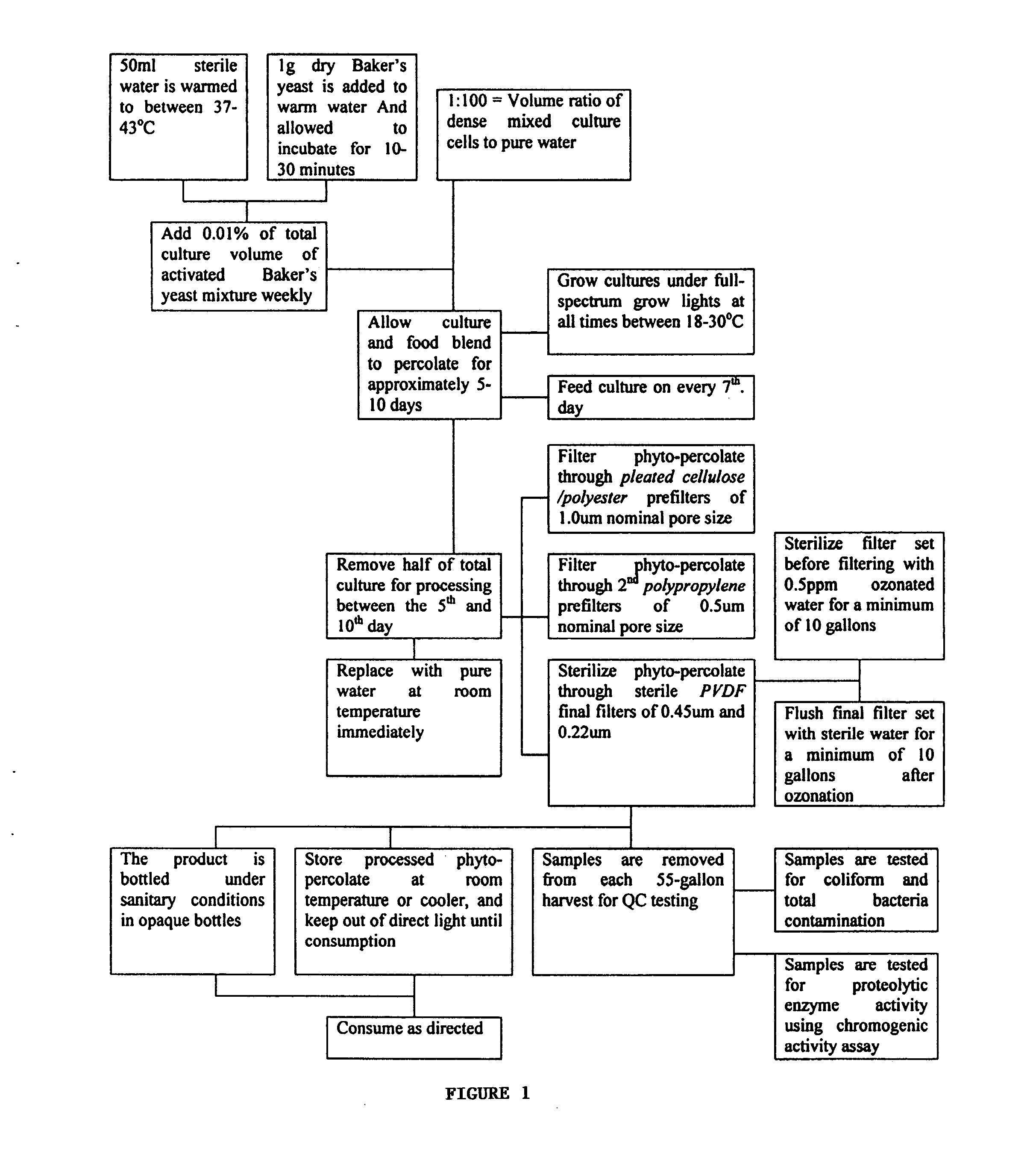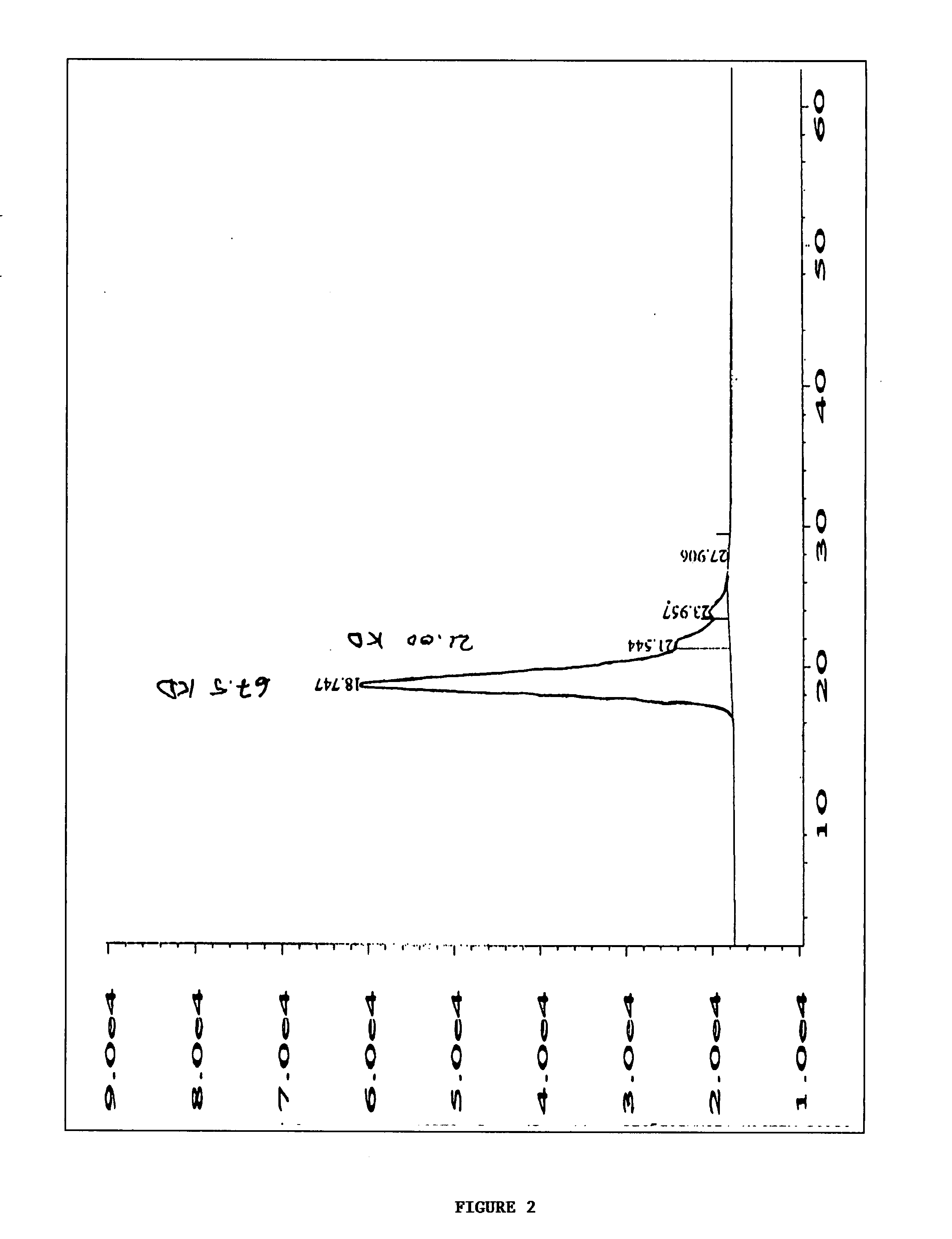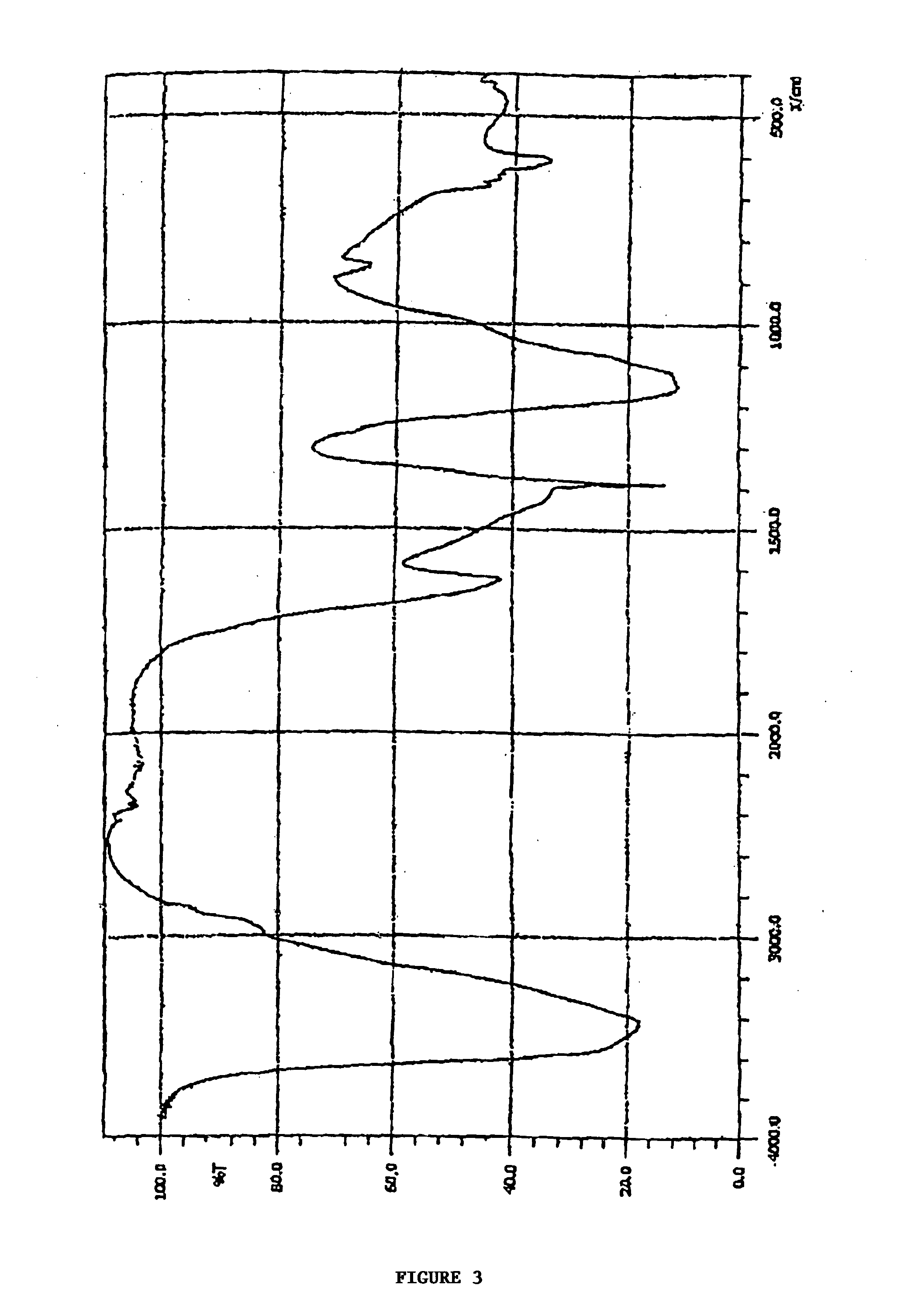Composition and use of phyto-percolate for treatment of disease
a technology of phytopercolate and disease, applied in the field of phytopercolate for disease treatment, can solve the problems of affecting the treatment process, affecting the recovery time, and affecting the detoxification and elimination process, so as to reduce the side effects of chemotherapy, reduce the recovery time, and reduce the oxidative stress
- Summary
- Abstract
- Description
- Claims
- Application Information
AI Technical Summary
Benefits of technology
Problems solved by technology
Method used
Image
Examples
example 1
Rodent Model of Weight Loss
[0096] A 21 day weight loss study using twelve mature (12 month old) Sprague-Dawley rats was performed. Each animal was orally administered 10 ml / kg of undiluted and unfiltered phyto-percolate (i.e., raw phyto-percolate) for 14 days, followed by non-dosing for 7 days. Each animal was weighted daily and observed for signs of toxicity. As shown in more detail in Table 1, the rats lost an average of 33 grams (6.3%) of body weight over the initial 14 day dosing period. They immediately began to regain lost body weight upon cessation of phyto-percolate administration. By the 21 day time point (7 days of non-dosing), the rats had lost an average of 25 grams (4.7%) of initial body weight (i.e., gained an average of 8 grams since phyto-percolate cessation).
[0097] The test animals were observed for adverse reactions immediately after each dose and at 4 and 24 hours subsequent. Daily observation for adverse reactions was continued during the 7 day non-dosing perio...
example 2
Human Weight Loss and Glucose Control Study
[0098] A single-center, prospective, randomized, triple-masked, placebo-controlled parallel-group-design pilot clinical trial of the phyto-percolate was performed using two different batches of the phyto-percolate. This trial was conducted in accordance with FDA regulations and under a protocol approved by an Institutional Review Board (IRB).
[0099] Subjects: Primary inclusion criteria were men and women having a body mass index (BMI) of 25-40 m / kg2, 18-70 years old (inclusive), and desirous of losing weight. Major exclusion criteria were moderate to severe co-morbid disease (e.g., cancer); history of stroke, transient ischemic attack (TIA), or similar conditions; uncontrolled hypertension, insulin-dependent diabetes, renal disease, moderately severe cardiac disease, lupus, alcohol abuse, and current or recent use of certain medications including medications and / or supplements for weight loss, glucose management, or arthritis. Women were e...
PUM
| Property | Measurement | Unit |
|---|---|---|
| molecular weight | aaaaa | aaaaa |
| molecular weight | aaaaa | aaaaa |
| volume | aaaaa | aaaaa |
Abstract
Description
Claims
Application Information
 Login to View More
Login to View More - R&D
- Intellectual Property
- Life Sciences
- Materials
- Tech Scout
- Unparalleled Data Quality
- Higher Quality Content
- 60% Fewer Hallucinations
Browse by: Latest US Patents, China's latest patents, Technical Efficacy Thesaurus, Application Domain, Technology Topic, Popular Technical Reports.
© 2025 PatSnap. All rights reserved.Legal|Privacy policy|Modern Slavery Act Transparency Statement|Sitemap|About US| Contact US: help@patsnap.com



